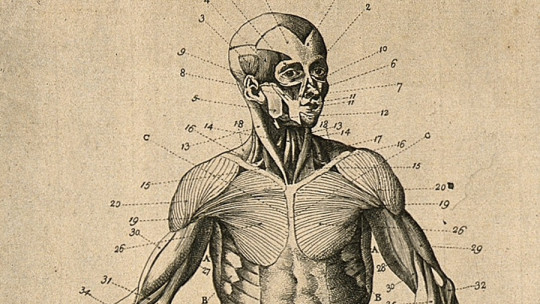
The Daniels scale or Daniels test is a tool used to measure muscle strength in the human body, especially in patients with neuromuscular disorders or localized injuries.
We must take into account that the muscular system allows us to relate to the environment, since it is responsible for movement, and therefore, responsible for our body adapting to the immediate spatial demands of the environment that surrounds us. That is why the human being has 650 different muscles, which correspond to 40% of the weight of an adult individual, a figure that is not insignificant.
So that, Assessing muscle strength in patients undergoing physiotherapy treatments is an essential issue In addition to identifying and monitoring the progression of diseases, scales such as Daniels’ can be useful for cultural events, as it allows the evaluation, for example, of participants in Paralympic sports.
For all the compelling reasons that we have previously stated, here We explain what the Daniels scale is and in what areas it is applied
Daniels scale: classifying muscle strength
As we have said previously, this and other scales are used to measure the strength of the muscles in the human body. Since we don’t want to start building the house from the roof, it is first necessary to establish, at least briefly, what muscular strength is and how it works.
About muscle strength
Muscle strength is defined as the ability of a muscle or series of muscles to exert tension against a load during muscle contraction exercise As simple as this “book” definition may be, various sources state that muscular strength can be dissected into three different variants:
As we can see, we are faced with muscular efforts that are classified according to their resistance, duration and speed of execution Each of these types of forces has uses at specific moments in the individual’s life and in various sports disciplines.
Muscular effort can be performed isotonic or isometric and there are three types of muscle contractions (agonists, antagonists and synergists). Although we are not going to dwell on this complex terminology due to the risk of deviating too much from the topic at hand, we throw in the terms so that the conceptual world that muscular strength contains remains in force.
A numerical scale
Returning to the topic that concerns us here, the Daniels scale It was published for the first time in 1946 and was written by the Americans Lucille Daniels, Marian Williams and Catherine Worthingham (Therefore, in English it is also known as the “Daniels and Worthingham Scale”). The work, known as “Muscle Functional Tests: Manual Exploration Techniques” continues to be available today, both in online format and on well-known sales portals.
The scale itself follows a specific numbering with six well-differentiated levels from 0 to 5. These are the following:
This numerical scale is accompanied by a qualitative evaluation, which assigns the parameters “Normal”, “Good”; “Regular”, “Deficient”, “Vestiges of activity” and “Null” to the values named above.
The division of this scale, quoted verbatim, allows physical therapists to evaluate a muscle’s ability to generate contraction which leads to making a movement, holding it or stopping it.
Even so, in some cases, the patient’s strength is a biased parameter, since it can be variable (for example, the individual uses less force than he is really capable of) and subjective. On these occasions, other more sophisticated tools are required.
An example of this is electromyography, a technique for graphically recording the electrical activity produced by skeletal muscles. We are no longer based on mere observation, since the electromyogram is obtained from the insertion of electrodes on the muscle or the skin surface above it.
It is important to recognize that the Daniels scale is part of a complete assessment of the patient’s neuromuscular status, but it does not provide answers to all the variables to be measured.
This test exemplifies both muscle strength and function, but Other parameters such as the following must also be taken into account: arcs of movement (observation of active and passive movement), balance and stability (observation of motor responses) and evaluation of the patient’s coordination and gait (through oculomanual tests, oculopedic tests and observation).
Furthermore, it presents certain reservations: above all, sections 4-5 of the scale are partially subjective, since they depend a lot on the examiner and the force that he applies to the limb to be evaluated. This has led various professionals to classify this type of scales as a method with little sensitivity and little validity, due to a high load of uncontrollable subjectivity.
Application of muscle strength tests
Neuromuscular diseases are a set of more than 150 neurological pathologies, mostly of a progressive nature and of genetic origin, whose main characteristic is the loss of muscle strength. Despite being considered serious diseases, it is estimated that today there are more than 60,000 people affected by this type of disorder in Spain alone.
More than 50% of these diseases appear during childhood, and unfortunately, there are still no effective treatments or cure, although detecting them in time allows the application of different therapies to alleviate their symptoms. In addition to a loss of mobility that generates a variable degree of disability in the individual, the loss of personal autonomy and the inability to self-actualize produce various psychosocial effects in the patient.
For all these reasons, Quickly identifying these disorders is essential to address them in a multidisciplinary manner (both in a medical and psychological field). Carrying out tests such as those of the Daniels scale are an adequate basis for the detection of various diseases or for the quantification of the damage caused after a traumatic event to the nervous system.
Not everything is reduced to genetic diseases, since for example, loss of muscle strength can occur after a stroke, injuries to the brain mass, trauma to the spine and many other pathologies. In this case we are dealing with acquired muscle disorders, since there is no apparent genetic predisposition on the part of the individual to suffer from them.
Summary
As we have seen, muscle strength tests or Manual Muscle Tests (MMT) are a series of relatively useful tools to assess the state of the patient’s muscles at a specific time.
Although their relative effectiveness is well established, these types of practices must be combined with more effective and objective methods such as electromyography, strain gauge or dynamometry, in addition to meters of many other parameters not directly associated with muscle strength itself.
The Daniels scale presents various benefits, due to the simple classification of the patient based on a numerical score, but it is questioned for certain reasons, such as the high subjective component of the evaluator in question. Of course, with the number of tools available today, an evaluation based on observation cannot be the only support for a diagnosis.








